About Me
My name is Esther Miller and I'm a rising senior at North Park University in Chicago double-majoring in Physics and Math while also competing on the women's basketball, track and field, and golf teams. I plan on pursuing a graduate degree in the feild of astronomy, astrophysics, or planetary sciences. This summer I had the opportunity to work with Professor Elvira Mulyukova developing my own research project investigating the possibility of water on Venus.
Contact info: ermiller [at] northpark.edu
Sister Planets
The habitability zone in a planetary system is at a the distance from a star where liquid water of planets is possible (Brennan, 2021). While Earth resides in the center of this zone, Venus and Mars also take up residence along the edges. This suggests a possibility of water existing on these planets. This paper will focus specifically on these possibilities for Venus as it is extremely similar to Earth. Often referred to as sister planets, they are akin in size, mass, distance from the Sun, and composition, among other things. At 0.95 of Earth's radius, Venus averages a 6051 km radius and a mass of 4.87x10^{24} kg which is 0.814 of Earth (Basilevsky & Head, 2003). The surface gravity on Venus is 0.91 that of Earths at 8.87 m/s^2 and a bulk density 0.95 of Earths at 5.24 g/cm^3 (Basilevsky & Head, 2003). The distance between the Sun and Venus is only 0.72 of Earth's at 1.08x10^8 km and therefore is slightly more illuminated by the Sun than Earth by a factor of 1.9 (Basilevsky & Head, 2003). However, Earths surface receives more energy from the Sun due to the optically bright clouds in the Venusian atmosphere reflecting a large portion of this energy (Basilevsky & Head, 2003). The difference in opaqueness of atmospheres can be seen in Figure 1. This is not the only difference between the sister planets, however, as Venus varies in many aspects from Earth as well. Currently, plate tectonics are only known to occur on Earth and are a result of convection currents in the mantle, a process to be discussed further on in this paper. While Venusian mantle is convecting as well, it does so underneath a rocky shell, a tectonic regime known as the stagnant lid, and the mechanisms that determine the tectonic regime of a rocky planet are currently a vigorous area of research and debate. Furthermore, and perhaps not unrelatedly, there is no detectable magnetic field on Venus.

Current Condition of Venus
The Venusian atmosphere is composed of 96.5% CO2 and 3.5% N2 (Williams, 2021). It is experiencing a runaway greenhouse effect. Venus receives energy from the Sun through electromagnetic waves, some of which are shorter wavelengths of visible light or radiation while other, longer wavelengths are reflected. This radiation energy is absorbed as heat by the planet and emitted back towards space as black-body radiation at much longer wavelengths. However, these longer wavelengths now interact with the larger molecules in the atmosphere such as CO2, CH4, O3, and H2O (greenhouse gases) and are reflected back to the planet to be absorbed and re-emitted again. As the planet heats up, the water at the surface evaporates into the atmosphere creating an environment with an abundant amount of water vapor. Water vapor blocks more black-body radiation than CO2 thus making it even more difficult for the heat to escape. As the planet heats, more water vapor will be released into the atmosphere making it even harder to escape causing the planet to get even warmer, and thus the cycle continues and why it becomes a runaway greenhouse effect. The surface temperature today is roughly 740 K (Mulyukova, 2020). Air pressure is 75 to 100 times that of the atmospheric pressure on Earth at around 9.3x$10^6$ Pascals. (JPL). Venus does not have plate tectonics (Basilevsky & Head, 2003)and, perhaps not unrelatedly, there is no detectable magnetic field on Venus to shield lighter elements in the upper atmosphere from solar winds.
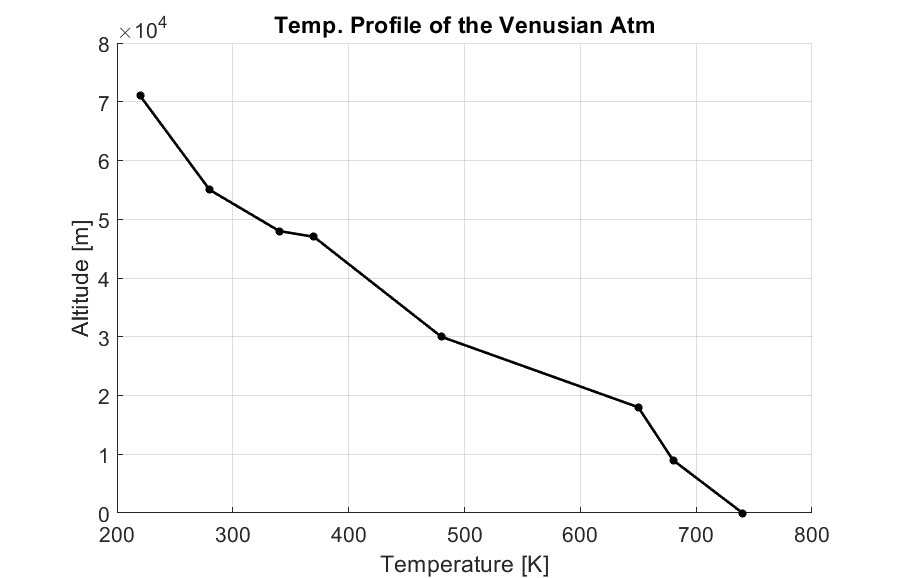
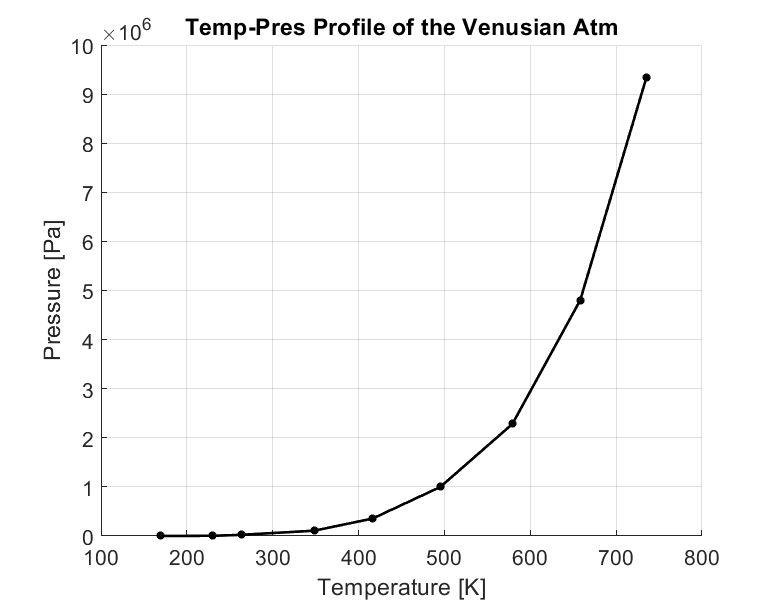
Processes That Effect Rate of Cooling on a Planet
During the formation of the solar system, various materials that compose the stellar dust fell into an orbit around the Sun undergoing extremely violent impacts with each other to form planetismals. As the dust particles accreted into increasingly larger objects, their collisions became violent and the kinetic energy was stored as heat in planetary interiors, which the planets are cooling from. As planets formed, their material differentiated as the heavier elements sank towards the center due to gravity. This processes released heat in the form of gravitational potential energy. Planets cool through three mechanisms: conduction, convection, and radiative heat transfer. Conduction occurs on the molecular level, and takes place when particles of differing temperatures are in contact with one another. In planets, this occurs at between rocky layer and the overlying atmosphere and ocean. The particles in the atmosphere have less kinetic energy (i.e. colder) than the rocky layer therefore the particles in the rocky layer are moving faster (i.e. hotter). As they collide with the colder bordering particles, momentum and heat is transferred through thermal conduction allowing for convection in the mantle. Upper mantle cooling causes the rock to become denser and sink towards the core. As it approaches the core, temperature increases decreasing the density and becoming more buoyant, allowing it to rise towards the surface where it will cool again. This motion creates convection currents within the mantle and is the most efficient method of cooling. During the formation of the planets, many elements were trapped within the rocks including radioactive elements such as uranium (238U), thorium (232Th) and potassium (40K) (Mulyukova, 2020). As radioactive elements decay, heat is emitted.
Water
Water on planets come from two primary sources: comets from the outer solar system (Kuiper Belt, Oort Cloud) and gases released from planet interiors. As the planet cools, degassing occurs through volcanism. Degassing is the processes of expelling molecules trapped within rocks and into the atmosphere. In order for water to exist on the surface, these eruptions must spew the gases below the water trap boundary for hydrogen to remain in the atmosphere.

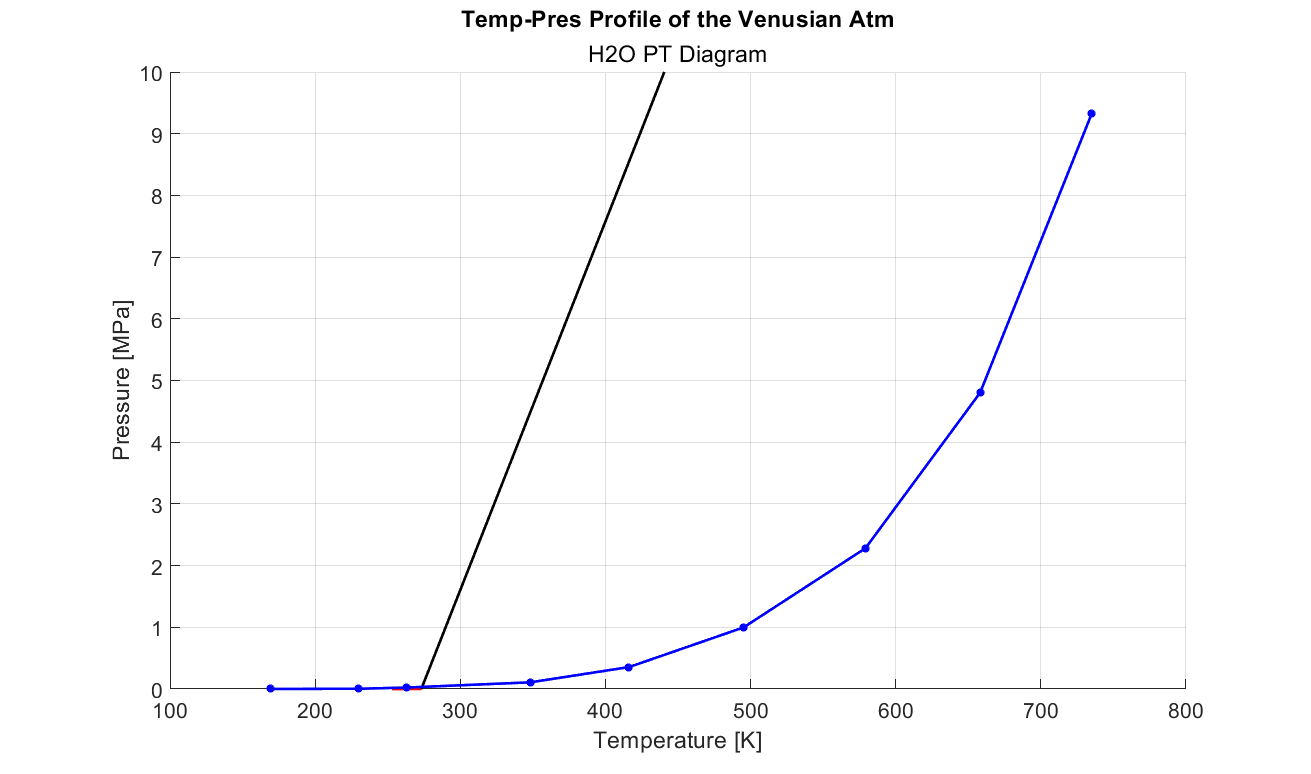
Thermal evolution of Venus
We modeled three different scenarios of thermal evolution of the Venusian surface. We consider the heat exchange between the planetary interior, a 4 km thick rocky shell at the surface, and the atmosphere (see Figure 1). We assume that heat is transferred across these layers via thermal conduction. The rate of heat flow from one layer to another is governed by the conduction equation which in one dimension can be expressed by Fourier’s Law:
q = −k ∂T⁄∂Z
Where q is heat flux per area, k is thermal conductivity, T is temperature, and Z is depth. Temperature evolution of the 4 km shell, which we expect to potentially host the liquid water, is dictated by the balance of heat flowing into it from the interior (Qi) and heat loss to the atmosphere (Qa). Mathematically, this can be expressed as:
∂T⁄∂t = (Qi − Qa)⁄(ρ cp V)
Where t is time, rho is density, cp is heat capacity, and V volume of the 4 km shell. In all cases, we assume that Qi is one thousandth that of Earth justified by the fact that the temperature difference between Venusian interior and surface is smaller than on Earth. In the first case, we consider Qa to be constant. In the second case, and more realistically, we allow Qa to be sensitive to the temperature difference between the atmosphere and the 4 km shell. In the third case, we invent an imaginary drop in atmospheric temperature through time, for illustration purposes.
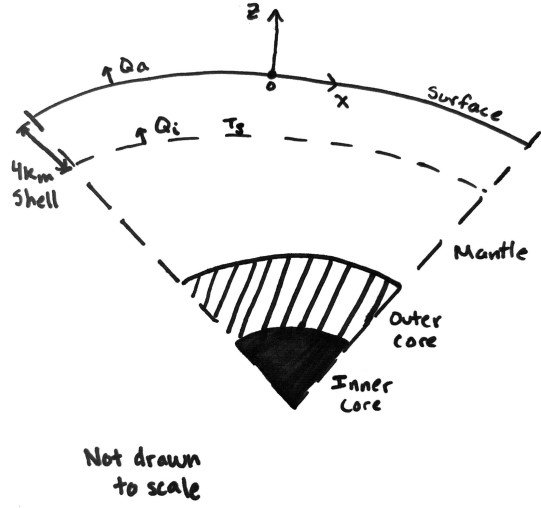
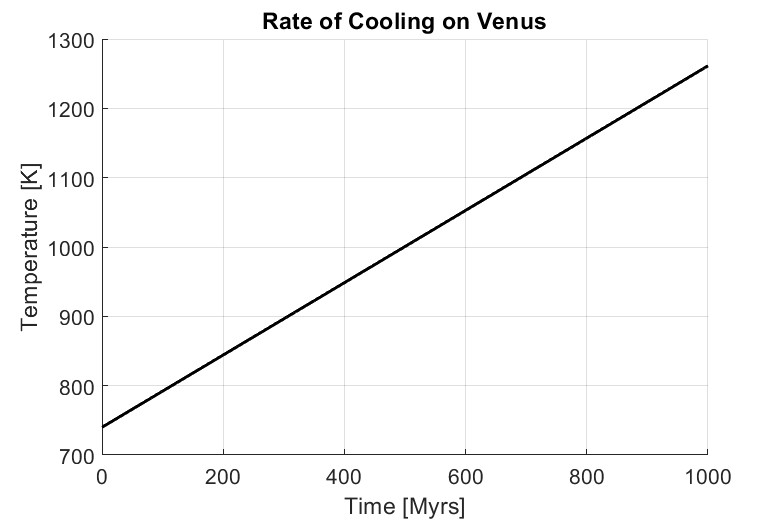
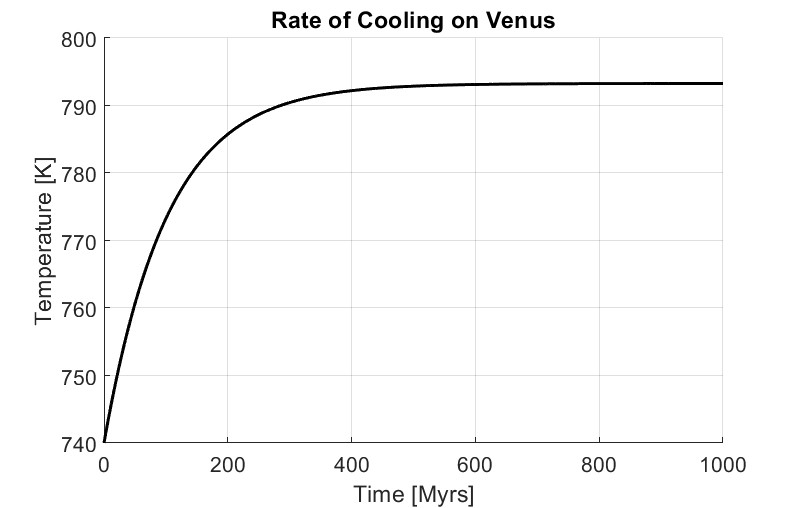

Missions to Venus
The Soviets were the first to launch an official mission to Venus, however the USA were the first to succeed in a planetary mission. Thus commencing the era of Venus. The USSR went on to launch seventeen other missions over the course of the next two decades while the USA sent out eight. Of all 26 missions, some failed, some where merely flybyies en route to other terrestrial objects such as Jupiter and Haley's Comet, and a majority were successful in returning data. While the first few Russian missions resulted in failures, the atmosphere/surface probe the Venera 4 launched on June 12, 1967, returned atmospheric data on temperature, pressure, wind velocity and components of the Venusian atmosphere over 25-55 km range of the night side of the planet (Basilevsky & Head).
Future Missions to Venus:
There are currently three missions planned to visit Venus within the next ten years. NASA has two, VERITAS and DAVINCI, while the European Space Agency (ESA) has one of their own, EnVision. VERITAS is planned to launch in 2028, DAVINCI is set for 2031 while EnVision will launch in the early 2030s. The fact that there are three missions planned to Venus, two of them being from NASA alone, speaks to the importance of what Venus could mean for our future knowledge. Not only will data gathered help in our understanding of how the planet formed, but also benefit our knowledge of how exoplanets may form.
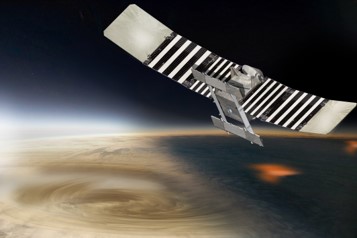

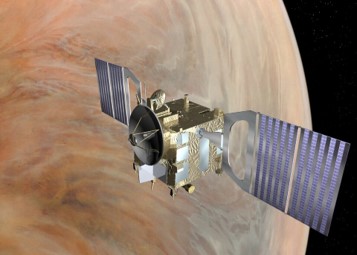
Acknowledgements
Thank you to Professor Elvira Mulykova for the help and support throughout the process of developing and conducting my own research project. Thank you to the members of the CIERA REU Cohort for their support and assistance. Thank you to Aaron Geller, Tjitske Starkenburg and CIERA for the opportunity to conduct research at Northwestern University. This material is based upon work supported by the National Science Foundation under Grant No. AST-2149425, a Research Experiences for Undergraduates (REU) grant awarded to CIERA at Northwestern University. Any opinions, findings, and conclusions or recommendations expressed in this material are those of the author(s) and do not necessarily reflect the views of the National Science Foundation.
References
[1]: Heat capacity and Energy Storage. – URL https://www.e-education.psu.edu/earth103/node/1005
[2]: Venus Air Pressure. 1968. – URLhttps://www.jpl.nasa.gov/news/venus-air-pressure
[3]: Newly-processed views of Venus from Mariner 10. 2021. – URL https://solarsystem.nasa.gov/resources/2524/newly-processed-views-of-venus-from-mariner-10/
[4]: "Magnetospheres". 2022. – URL https://science.nasa.gov/ heliophysics/focus-areas/magnetosphere-ionosphere/
[5]: Solar system temperatures. 2022. – URL https://solarsystem. nasa.gov/resources/681/solar-system-temperatures/
[6]: BASILEVSKY, Alexander T. ; HEAD, James W.: The surface of Venus. In: Reports on Progress in Physics 66 (2003), Nr. 10, S. 1699–1734
[7]: BLUMENTHAL ; KAY ; PALEN ; SMITH: Understanding Our Universe. New York: W.W. Norton & Company, 2012. – ISBN 9780393912104
[8]: BRENNAN, Prat: The habitable zone. 2021. – URL https://exoplanets.nasa.gov/search-for-life/habitable-zone/
[9]: FOLEY, B. J. ; DRISCOLL, P. E.: Whole planet coupling between climate, mantle, and core: Implications for rocky planet evolution. In: Geochem. Geophys. Geosyst. (2016)
[10]: MULYUKOVA, Elvira ; BERCOVICI, David: Mantle convection in terrestrial planets. In: Oxford Research Encyclopedia of Planetary Science (2020)
[11]: SCHROEDER, D.v.: Introduction to Thermal Physics. Addison Wesley Longman, 2000
[12]: TOOLBOX, Engineering: Carbon dioxide - Density and Specific Weight vs. Temperature and Pressure. 2018. – URL https://www.engineeringtoolbox.com/carbon-dioxide-density-specific-weight-temperature-pressure-d 2018.htm
[13]: TOOLBOX, Engineering: Carbon Dioxide - Thermophysical Properties. 2018. – URL https://www.engineeringtoolbox.com/ CO2-carbon-dioxide-properties-d 2017.html
[14]: WILLIAMS, D: Venus fact sheet. 2021. – URL https://nssdc.gsfc.nasa.gov/planetary/factsheet/venusfact.html